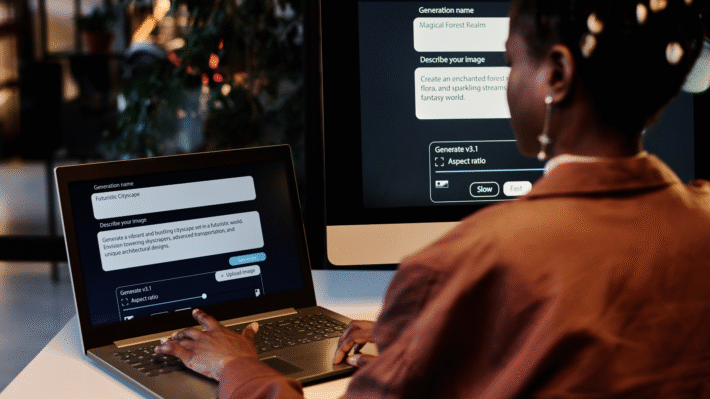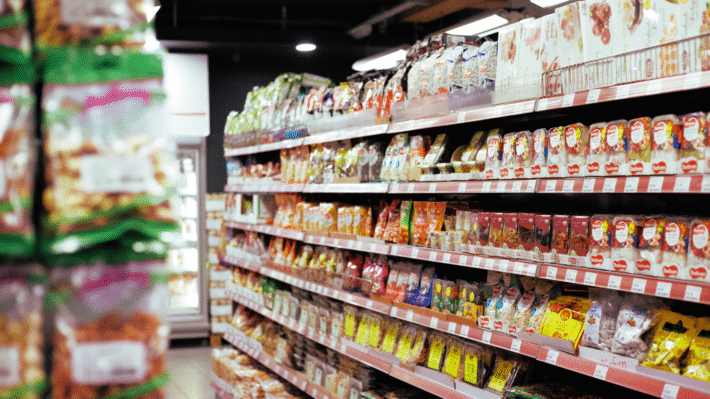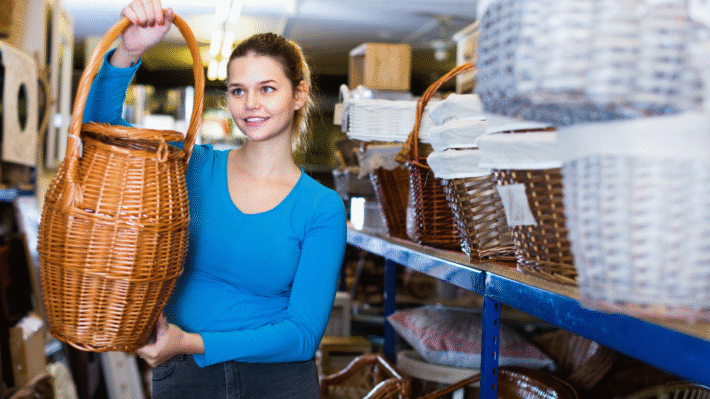Design for Recyclability Creating Sustainable Products for a Zero-Waste Future

Design for Recyclability is a game-changer! Imagine a world where every product can be easily taken apart and recycled. This dream can come true with closed-loop systems. By focusing on material selection, using single-material components, and opting for clever modular design, we can make waste a thing of the past.
Why should you care? Designing products with recyclability in mind can reduce waste, cut costs, and make your brand stand out. It also ensures you meet all the important green regulations. Picture consumer electronics, automotive, and even fashion industries paving the way with innovative designs. With minimal mixed-materials and great material transparency, these industries set a great example.
If we all start designing with recyclability at heart, imagine the possibilities! Let’s dive into what makes this approach so promising.
Introduction to Design for Recyclability
Design for Recyclability is all about making things that can be easily taken apart and reused. This is important to help keep our planet clean and healthy. Believe it or not, everything starts with how we make our products. From the materials we choose to the way they fit together, it all affects how easy they are to recycle later on.
Understanding the Basics
Getting to know the basics of Design for Recyclability means learning how products are designed to be friendly to the environment. There are a few key ideas to know.
Core Principles of Recyclable Design
The core principles are like the rules we follow to make sure products can be recycled. First, choosing materials that can be reused is very important. You want to pick things that won’t harm the Earth.
Second, it’s crucial to make products in a way that they can be easily taken apart. If you can take a product apart, you can put its pieces to good use again. It’s like putting together a puzzle, but it can be un-puzzled when needed.
Third, using fewer types of materials is another great idea. Mixed materials can be tricky to separate for recycling, so sticking to just one or two makes it easier.
Benefits of Closed-Loop Systems
Now, let’s talk about closed-loop systems. This is a fancy way of saying we need to keep materials in use as long as possible. Closed-loop systems help us reduce waste because the materials don’t just end up in a dump. Instead, they go back into making new products.
These systems also save money. When companies reuse old materials, they don’t have to buy new ones. Plus, it makes the companies look good. People like to buy from companies that care for the Earth.
Why Circularity Matters
Circularity is about using things in a circle instead of a straight line. It means we keep materials going around and around, not straight to the trash. Let’s learn why this is important.
Environmental Impact of Wasteful Design
Wasteful design is when products end up in the garbage too quickly. This is bad because our landfills get bigger, and we harm our planet.
Wasteful designs are also pollutive. They can hurt animals and plants. They might even harm the places we love to visit like parks and lakes.
Reducing Resource Depletion
By designing with circularity in mind, we can reduce resource depletion. This is important because our planet has only so many resources. If we use less, we help keep the Earth green and bountiful.
Every time we make something new, it uses resources. But if we make products that can be recycled, we use up fewer of those precious resources.
So, when we design with recyclability in mind, we protect our world for the future.
This keeps it safe for our kids and their kids, too.
Key Elements of Design for Recyclability
Material Selection
Choosing Single-Material Components
Choosing Single-Material Components is super important for design that leads to easy recycling. When we use just one type of material, like only plastic or only metal, it makes the job of breaking things down for recycling so much easier. Think about a toy made entirely from the same kind of plastic. Instead of having different parts made from different materials, it’s just one kind. So, when it’s time to recycle, there’s no guessing game on how to separate the parts. This saves lots of time and resources. Plus, it helps keep waste out of landfills and puts it back into making something new!
Embracing Non-Toxic Materials
A really good step in design is Embracing Non-Toxic Materials. Imagine using things that won’t harm people or the planet. This means picking materials that are safe and clean. Non-toxic materials make recycling much safer and easier because there’s no worry about spreading bad stuff around. For example, when using paints and coatings, choosing ones that don’t have harmful chemicals is a big plus. This not only keeps the environment clean but also makes products safer to use and recycle!
Innovative Design Approaches
Modular Design Techniques
Modular Design Techniques are like building blocks for making things easy to fix and recycle. By designing parts that can fit together in a simple way, like LEGO blocks, we can change or fix just one piece instead of the whole product. This means if one part breaks, you don’t need to throw everything away—you just replace that part! It’s like having a toy where you can switch out the parts you don’t like or that are broken. This type of design helps a lot with recycling because it reduces waste and uses fewer resources.
Avoiding Mixed Materials
When it comes to making stuff, it’s smart to Avoid Mixed Materials. Mixing materials, like combining metal with plastic, makes recycling a real puzzle. Think about a candy wrapper made of aluminum and plastic. It’s so much harder to recycle because the two materials have to be separated first, which is tough and takes more energy. By sticking to one kind of material or making sure different materials can be easily taken apart, we make recycling simpler and faster. This choice is better for the earth and helps recycling happen smoothly.
Emphasizing Material Transparency
Importance of Material Passports
Imagine a world where every product comes with its own guidebook, like a passport. The Importance of Material Passports is that they tell exactly what materials are in a product. It’s like reading the list of ingredients on a cereal box. This makes it super simple for recycling centers to know what they’re working with. Companies like Fairphone are leading the way by using material passports to share info about their products. By doing this, we make recycling a breeze because we’re not guessing what something is made of.
Recyclers Collaboration
Recyclers Collaboration means working together with the people who do the recycling. It’s all about teamwork! When designers and recyclers chat and share ideas, they can come up with even better ways to recycle things. It’s like when friends work together on a school project. If everyone knows exactly what’s in a product and how it can be taken apart, recycling becomes much more efficient. This partnership creates smarter designs and helps ensure that nothing gets wasted. Collaboration is the key to a greener future!
Industry Pioneers in Recyclable Design
Consumer Electronics and Automotive
Innovations by Fairphone and BMW
Fairphone and BMW are leading the way in building products that are easy to take apart and recycle. Fairphone is known for creating phones that can be fixed easily. This means if a part breaks, you don’t have to throw the whole phone away. You can just change the broken part. This helps save materials and cuts down on waste. Learn more here.
BMW has also made cars that use less energy and can be recycled better. Their cars are made with parts that can be separated easily. This makes it simple to recycle the parts when a car is no longer usable. BMW is showing other car makers how to care for the planet while still making cool cars. Read more about BMW’s efforts.
Impact of Tesla’s Design Choices
Tesla is famous for making electric cars that are good for the earth. But did you know they also care about recycling? Tesla makes sure their car parts aren’t just thrown away. They use materials that can be recycled, and they work on making their cars easy to take apart. This means less waste and more reuse of materials. Tesla is helping the car world by showing that you can make fast, exciting cars while also thinking about recycling. See how Tesla is contributing.
Packaging and Fashion
Coca-Cola’s Packaging Strategies
Coca-Cola wants to make sure their drinks cause less litter. So they are trying to use bottles that can be recycled easily. They have goals to make more bottles from materials that have been recycled before. Coca-Cola is working hard to make a cycle where their bottles get used, recycled, and then turned into new bottles. This cycle helps the planet by reducing garbage and saving resources. Discover more about Coca-Cola’s goals.
The Role of Nike and Patagonia
When it comes to clothes, Nike and Patagonia are doing great things with recycling. Nike is working on shoes and clothes that are made from recycled materials. They also want their products to last a long time, so people don’t have to buy new ones all the time. Check out Nike’s sustainability.
Patagonia is known for making clothes that are friendly to the earth. They use recycled fabrics and make products that can be fixed easily. If a jacket breaks, you don’t need to buy a new one; you can fix it! They also take back old clothes to recycle them into new ones. Patagonia’s approach helps us use fewer materials and keep our earth clean. Learn about Patagonia’s impact.
These companies show us how to make products that not only work well but also care for our planet. By following their example, other companies can also make a big difference.
Challenges and Solutions in Design for Recyclability
Overcoming Economic and Technological Barriers
Addressing Economic Costs
When we talk about Design for Recyclability, money matters. Making things recyclable can cost more at first, and that’s a big deal. Companies have to spend more on designing, testing, and using better materials. This can make products cost more for consumers, too. But wait! In the long run, the costs could go down. Why? Because reusable and recycled materials mean spending less money on getting new stuff. We need to spread the word on how saving the earth can save us money, too!
Navigating Technological Limitations
Technology can sometimes be tricky. Some products are hard to take apart, and our recycling machines aren’t always up for the job. New advanced technology is needed to make recycling smarter and faster. Companies should invest in tools like AI and robot arms to help sort and separate materials. This way, recycling becomes more effective, and we can recycle more types of things.
Enhancing Consumer and Infrastructure Engagement
Influencing Consumer Behavior
People are key to recycling success. Customers need to understand why choosing recyclable products matters. Schools, companies, and social media need to teach everyone about the problems with waste and the power of recycling. Engaging activities and cool contests can make recycling fun. When folks feel like they’re making a difference, they’re more likely to change their habits for good.
Improving Infrastructure Consistency
Not all places are equal when it comes to recycling infrastructure. Some towns and cities have awesome recycling programs, while others struggle. Governments need to set up rules that make recycling easy and widely available. Making sure recycling bins are everywhere and updating recycling centers will help lots. Companies can team up with local governments to make all neighborhoods recycling-friendly. Let’s make it so the right choice is the easy choice!
Future of Design for Recyclability
Emerging Technologies and Materials
The Promise of Biodegradable Electronics
In the world of recyclability, the promise of biodegradable electronics is like a shining star. Imagine a smartphone that, instead of ending up in a landfill, simply returns to nature after its job is done. Biodegradable electronics are made from materials that can break down naturally, leaving no harmful waste behind. They are crafted from things like organic polymers, cellulose, and even special ink that dissolves into soil. This can reduce electronic waste, making our planet a cleaner place.
Advances in AI-Driven Recycling
Recycling has gotten smarter, thanks to advances in AI-driven recycling. Think of huge machines that can sort different materials faster than you can blink. AI robots use cameras and sensors to identify and separate recyclables, like plastic, glass, and metal. This makes recycling more efficient and reduces mistakes. By using smart technologies, we can save resources and help our earth stay healthy. This brings us closer to a future where recycling is easy and effective for everyone.
Tracking and Optimization Techniques
The Role of Blockchain
The role of blockchain in recyclability is super cool. Blockchain is like a digital book that keeps track of everything. In recycling, it keeps records of materials, showing us where they come from and how they are reused. This helps people trust the recycling process more. By knowing the journey of materials, companies can improve how they recycle and make sure less waste ends up in the trash. Blockchain can bring transparency and trust to the recycling world.
Implementing Smart Labels
Smart labels are like magic stickers helping with recyclability. By implementing smart labels with technology like RFID or QR codes, you can know exactly what materials make up a product. Just by scanning the label with a phone, you can get instructions on how to recycle it. This means less confusion and more recycling success. Smart labels make it easier for people to do their part and keep our environment clean.
Conclusion: Call to Action
Embrace Sustainability and Innovation
In today’s world, sustainability and innovation go hand in hand. To make our planet a better place for all, we must find new and better ways to create and recycle. We need to think about the whole life cycle of a product, from the beginning to the end. This not only helps the environment but also gives companies a fresh edge in the market.
This is a note: One great example is Fairphone. They make phones designed to last, which are easy to repair and recycle. Read about Fairphone
Importance of Collaboration
Collaboration is key. When designers, recyclers, and companies work together, amazing things happen. It’s important to share ideas and resources. When people come together, they can make products that are easy to take apart and recycle. This team effort makes products that last longer and are resource-friendly.
Designers, manufacturers, and recyclers all play a part. Together, they make a difference. Collaboration gives birth to more efficient ways to use materials.
The Path to a Circular Economy
A circular economy is like nature. Nothing goes to waste. In this system, companies design products that will live on even after they are used. They can be recycled, repaired, or made into something new. This way, we save resources and reduce pollution.
To reach this goal, we must rethink how products are made. Use simple designs with materials that can be fully reused or recycled. Support companies that are leading the way. Everyone’s effort counts. Let’s embrace this change.
In a circular economy, waste is a thing of the past. Products are part of a closed-loop system that supports the environment and economy. Learn more about circular economies
Join the movement for better design practices. Let’s innovate and make recycling a reality. With teamwork and new ideas, we can build a sustainable future.



